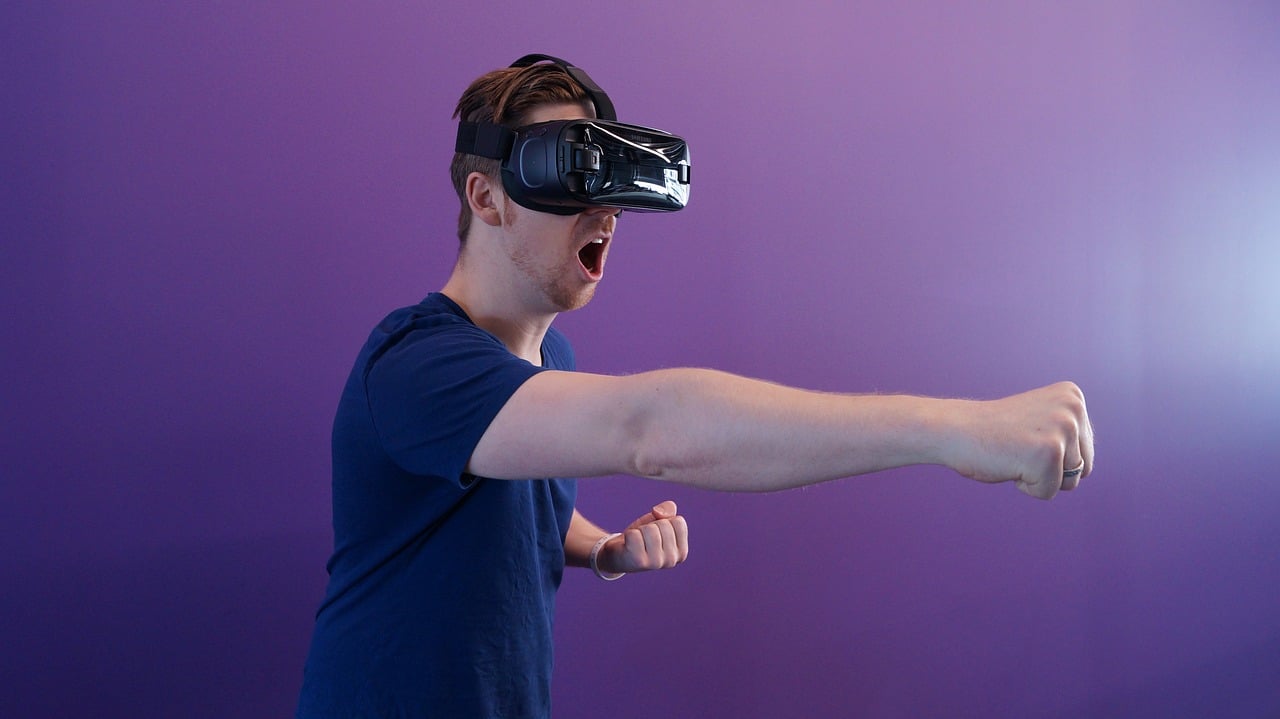VR games are the next big thing in the gaming world, and developers are also trying their best to make the experience more immersive. One Robotics engineer, however, has taken a big leap when it comes to making the VR experience more immersive. This engineer has come up with a fighting robot that hits humans in real-life when they play VR fighting games.
Fighting robot for VR fighting games
James Bruton, a robotics engineer and YouTube creator, partnered with University of Portsmouth students to create this fighting robot. This robot has a wheeled wooden base and punching arms that are made from 3D-printed parts. The robot wears boxing gloves to soften the blow.
Additionally, the robot is powered by an Arduino Mega interface, while the movements of its arms, and the player’s headsets and arms (equipped with sword and shield) is tracked by the Vive trackers. For now, the movements of the robot are set to a custom-made VR game, notes a report from The Verge.
The machine and software were created with the help of students at the University of Portsmouth’s Computer Game Technology program. The robot was part of the students’ project.
VR gadgets to boost your gaming experience
So far, Bruton’s fighting robot seems to be the best advancement to provide a realistic experience in VR fighting games. However, as of now, there is no information if it will be available commercially.
Meanwhile, if you want a VR add-on, there are companies working on gloves and other game equipment to provide haptic feedback and an immersive experience when griping virtual objects.
For instance, Google filed a patent for motorized shoes, which will allow users playing a VR game to move around in a room without bumping into walls. The patent mentions that the VR footwear use small wheels to help users easily move in a room.
“A physical position of motorized footwear in a physical environment may be tracked, and movement of the footwear may be transmitted into corresponding movement in a virtual environment,” the patent reads.
There is also a “Sensory Mask” – called Feelreal – that allows players to smell in games. This mask can be fitted on any VR headset, including Oculus Rift, Oculus Go, PlayStation VR, Samsung Gear VR, and HTC Vive. It attaches to the headset with magnets and uses Bluetooth or WiFi to communicate.
Feelreal supports 255 different scents, but at any one time, it can hold only nine individual odors. Further, users can swap the cartridges based on the experience they are trying to create. Some of the available smells are rubber, gunpowder, lavender and roses. These smells are created from similar chemicals that are used in the food industry, and thus, are not harmful.
Apart from smells, Feelreal is also capable of providing other sensations, such as rain. “Feel the rain on your cheeks with our ultrasonic ionizing system. Enjoy the cool mountain breeze via two powerful micro-coolers. Sense the warmth of the desert with safe micro-heaters. Endure the impact when force feedback haptic motors kick in!” reads the description of the mask.
Glove and arm also available
A report from TechSpot last year talked about a VR glove which was being developed by researchers at the École Polytechnique Fédérale de Lausanne (EPFL) and Eidgenössische Technische Hochschule (ETH) in Zurich. The VR glove, as per the report, is light weight and consumes less power.
Further, the report said that the material of the glove in just 2mm thick, and components attached to each finger weigh about 8 grams. Despite being relatively lighter than other similar products, this glove is claimed to generate up to 40 Newtons of holding strength on each finger. Talking of power, the report notes that it needs just a few milliWatts to function.
“We wanted to develop a lightweight device that – unlike existing virtual-reality gloves – doesn’t require a bulky exoskeleton, pumps or very thick cables,” EPFL’s Soft Transducers Laboratory head, Herbert Shea, told Tech Xplore.
If you don’t want a glove, there is also an arm that you can buy, but it won’t support gaming. Last month, Open Bionics – in partnership with Hanger Clinic – brought its Hero Arm prosthetic limb to the U.S. Previously, the Hero Arm was available only in the UK and France. These arms start at around $3,000.
“Special sensors within the Hero Arm detect muscle movements, meaning you can effortlessly control your bionic hand with intuitive life-like precision,” Open Bionics says. Also, users get intuitive notifications with haptic vibrations, beepers, buttons and lights.





